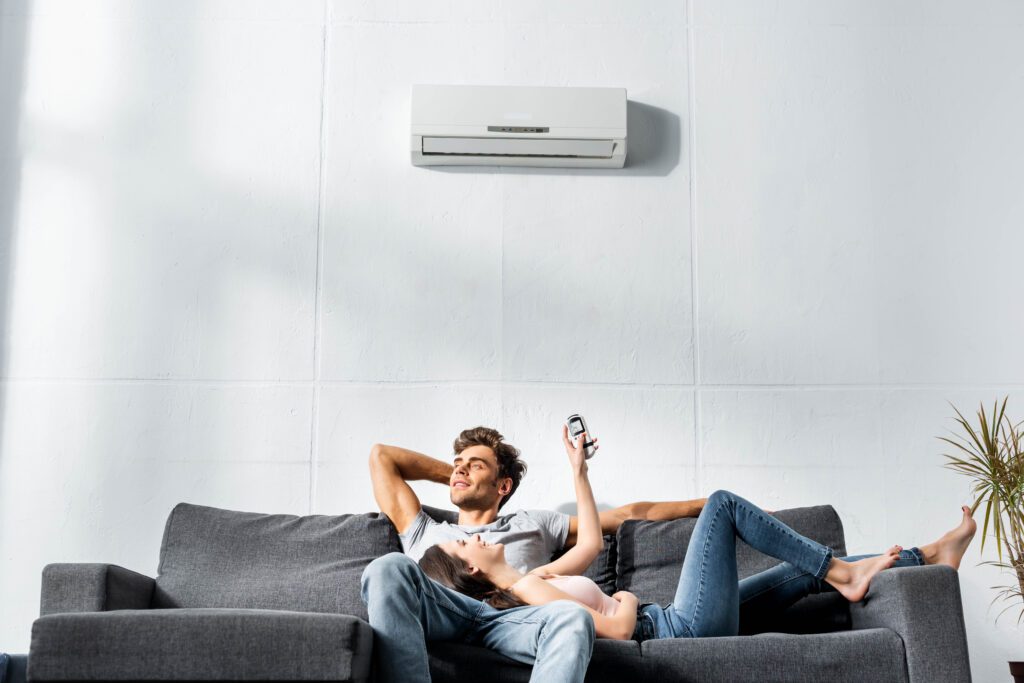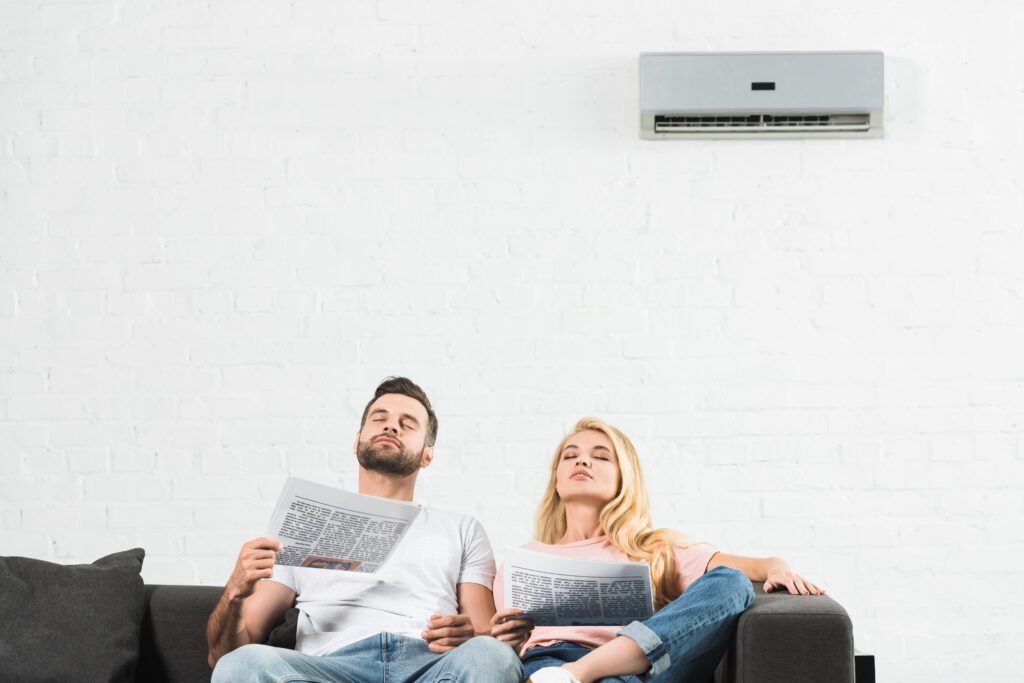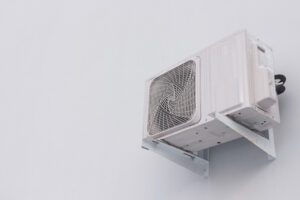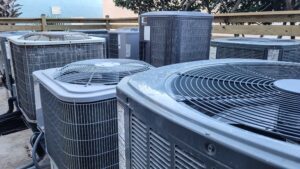In today’s fast-paced world, we often overlook the importance of maintaining good indoor air quality. However, poor air quality can have a significant impact on our health and well-being. From allergens and pollutants to humidity levels, there are many factors that can affect the air we breathe indoors. In this article, we will explore five tips to help improve indoor air quality and create a healthier living environment for you and your loved ones.
Understanding Indoor Air Quality
Before we delve into the tips, it is essential to understand what indoor air quality is and why it matters. Indoor air quality refers to the cleanliness and safety of the air within enclosed spaces, such as homes, offices, and schools. Good indoor air quality ensures that the air we breathe is free from harmful pollutants and promotes a healthier living environment.
Indoor air quality is not just about the absence of visible pollutants but also encompasses factors like temperature, humidity, and ventilation. Proper ventilation is crucial for maintaining good indoor air quality as it helps to dilute and remove indoor pollutants. Inadequate ventilation can lead to a buildup of contaminants and compromise the health of occupants.
The Importance of Good Indoor Air Quality
Poor indoor air quality can have a profound impact on our health. Exposure to pollutants such as dust, mold, pet dander, and volatile organic compounds (VOCs) can lead to respiratory issues, allergies, and even contribute to the development of chronic illnesses. Moreover, inadequate ventilation and high humidity levels can create the perfect breeding ground for mold and other harmful microorganisms.
Monitoring indoor air quality is essential for ensuring a healthy indoor environment. Regularly checking for pollutants, maintaining proper ventilation systems, and using air purifiers can significantly improve the quality of the air we breathe. Investing in indoor plants can also help to naturally filter the air and enhance overall air quality.
Common Pollutants Affecting Indoor Air Quality
There are several common pollutants that can degrade indoor air quality. Dust mites, pollen, pet allergens, and tobacco smoke are just a few examples. Additionally, chemical pollutants from cleaning products, paints, and furniture can release harmful VOCs into the air. Understanding these pollutants is the first step towards improving indoor air quality.
It’s important to address the sources of indoor air pollutants to effectively improve air quality. Simple steps like using environmentally friendly cleaning products, regularly changing air filters, and minimizing the use of synthetic fragrances can make a significant difference. Awareness and proactive measures are key to ensuring that the air we breathe indoors is clean and safe for everyone.
Tip 1: Regular Cleaning and Maintenance

One of the simplest ways to improve indoor air quality is by maintaining a clean and tidy living space. Regular dusting and vacuuming can help keep allergens, dust mites, and pet dander at bay. Paying attention to the cleanliness of curtains, upholstery, and carpets is equally important. Additionally, changing air filters regularly and scheduling routine HVAC maintenance can significantly improve air circulation and filter out pollutants.
The Role of Dust in Air Quality
Dust is one of the most common indoor pollutants and can have a significant impact on air quality. Dust particles can contain allergens, such as pollen and pet dander, as well as chemicals from everyday household items. Regular dusting and cleaning surfaces can help reduce the amount of dust in your home, leading to improved air quality.
Importance of Regular HVAC Maintenance
Proper maintenance of heating, ventilation, and air conditioning (HVAC) systems is crucial for maintaining good indoor air quality. HVAC systems can harbor dust, mold, and other pollutants if not adequately maintained. Regular inspections and cleanings can ensure that these systems operate efficiently, providing clean and filtered air throughout your home.
Moreover, when it comes to regular cleaning and maintenance, it’s not just about the visible surfaces. Deep cleaning tasks such as cleaning air ducts, washing bedding, and sanitizing frequently touched surfaces like doorknobs and light switches can also contribute to better indoor air quality. These often-overlooked areas can harbor dust, bacteria, and other contaminants that can affect the air you breathe.
The Impact of Indoor Plants on Air Quality
Another aspect to consider for improving indoor air quality is the use of indoor plants. Certain houseplants are known for their air-purifying properties, as they can help remove toxins and pollutants from the air. Plants like spider plants, peace lilies, and aloe vera not only add a touch of greenery to your living space but also act as natural air filters, enhancing the overall air quality in your home.
Tip 2: Use of Air Purifiers

Air purifiers are an excellent investment for improving indoor air quality. These devices work by filtering out pollutants and allergens, ensuring that the air you breathe is as clean as possible. There are various types of air purifiers available, including mechanical filters, activated carbon filters, and ionizers. Choosing the right air purifier for your needs can greatly improve the air quality in your home.
Different Types of Air Purifiers
When selecting an air purifier, it is essential to consider the different types available. Mechanical filters, such as High-Efficiency Particulate Air (HEPA) filters, can effectively remove allergens and fine particles from the air. Activated carbon filters are excellent for removing odors and chemical pollutants. Ionizers work by charging particles, causing them to stick to surfaces and removing them from the air.
UVGI (Ultraviolet Germicidal Irradiation) purifiers are another type of air purifier that uses ultraviolet light to kill bacteria, viruses, and other pathogens in the air. These purifiers are especially effective in sterilizing the air and preventing the spread of airborne diseases. Hybrid air purifiers combine multiple technologies, such as HEPA filters and UV-C light, to provide comprehensive air purification.
How Air Purifiers Improve Air Quality
Air purifiers play a crucial role in improving indoor air quality by capturing and filtering out pollutants. They can significantly reduce the presence of allergens, dust, pet dander, and even mold spores. By removing these harmful particles, air purifiers create a healthier living environment, especially for individuals with respiratory conditions or allergies.
In addition to removing particles from the air, some air purifiers also release negative ions that can help improve mood and overall well-being. These negative ions attach to airborne particles, making them too heavy to remain airborne and causing them to fall to the ground. This process can reduce airborne contaminants and improve air quality, creating a fresher and more invigorating indoor environment.
Tip 3: Proper Ventilation

Proper ventilation is essential for maintaining good indoor air quality. It helps remove stale air, prevents the buildup of pollutants, and ensures a constant supply of fresh air. There are two main types of ventilation: natural and mechanical. Understanding how to incorporate both types into your living space can significantly improve air quality.
When considering proper ventilation, it’s important to also take into account the impact of outdoor air quality on indoor air. For example, if you live in an area with high pollution levels, you may need to be more strategic about when you ventilate your home to minimize the intake of pollutants. Monitoring local air quality reports can help you make informed decisions about when to open windows or use mechanical ventilation systems.
Natural Ventilation Techniques
Natural ventilation techniques rely on openings like windows and doors to allow fresh air to circulate throughout the house. Opening windows on opposite sides of a room creates cross-ventilation, which helps draw in fresh air and expel stale air. Using window coverings wisely, such as blinds or curtains, can regulate the amount of sunlight and fresh air entering a room.
In addition to windows and doors, incorporating architectural features like skylights or atriums can enhance natural ventilation in a home. These design elements not only bring in natural light but also create opportunities for passive airflow, reducing the need for mechanical ventilation systems and lowering energy costs.
Mechanical Ventilation Solutions
Mechanical ventilation systems incorporate fans or air-handling units to draw in fresh air and expel stale air. These systems can filter incoming air, improving its quality before it circulates in your home. Installing exhaust fans in areas prone to high humidity, such as bathrooms and kitchens, can also help remove excess moisture and prevent the growth of mold.
For those looking to take ventilation a step further, energy recovery ventilators (ERVs) and heat recovery ventilators (HRVs) are advanced mechanical ventilation systems that not only bring in fresh air but also recover heat or energy from the outgoing stale air. This not only improves indoor air quality but also helps maintain a comfortable temperature in your home while reducing energy consumption.
Tip 4: Control Humidity Levels

Maintaining ideal humidity levels in your home is crucial for good indoor air quality. Excess moisture can promote the growth of mold, mildew, and dust mites, which can worsen allergies and respiratory conditions. On the other hand, low humidity can cause dry and irritated skin, as well as respiratory discomfort. Balancing humidity levels is key to creating a healthy indoor environment.
When it comes to controlling humidity levels, it’s not just about comfort but also about health. High humidity can lead to an increase in indoor pollutants, as well as the proliferation of allergens like dust mites. On the flip side, low humidity levels can contribute to the spread of airborne viruses and bacteria. Finding the right balance is essential for ensuring that your indoor air is clean and safe to breathe.
The Impact of Humidity on Air Quality
Humidity plays a significant role in indoor air quality. High humidity levels create a breeding ground for mold and mildew, while low humidity can result in dryness and discomfort. Maintaining a humidity level between 40-60% is considered ideal for healthy indoor air quality.
Moreover, humidity levels can also affect the structural integrity of your home. Excess moisture in the air can lead to warping of wood, peeling paint, and even damage to electronic devices. On the other hand, overly dry air can cause wooden furniture to crack and shrink. By managing humidity levels effectively, you not only protect your health but also safeguard your home from potential damage.
Ways to Manage Indoor Humidity
To control humidity levels, use dehumidifiers in areas where moisture tends to accumulate, such as basements or bathrooms. Proper ventilation and air circulation can also help reduce humidity. Additionally, fixing any leaks or water damage promptly and ensuring proper insulation in your home can prevent excess moisture from entering your living space.
Another effective way to manage indoor humidity is by incorporating houseplants that naturally absorb moisture from the air. Plants like peace lilies, spider plants, and Boston ferns not only add a touch of greenery to your space but also act as natural air purifiers. By strategically placing these plants throughout your home, you can help maintain optimal humidity levels while enhancing the overall aesthetic appeal of your indoor environment.
Conclusion
Improving indoor air quality is crucial for maintaining a healthy living environment. By following these five tips, you can greatly improve air quality and reduce the risk of respiratory issues and allergies. Understanding the importance of good indoor air quality, managing common pollutants, and implementing proper cleaning, ventilation, and humidity control techniques are all essential steps towards creating a healthier home for you and your loved ones.



